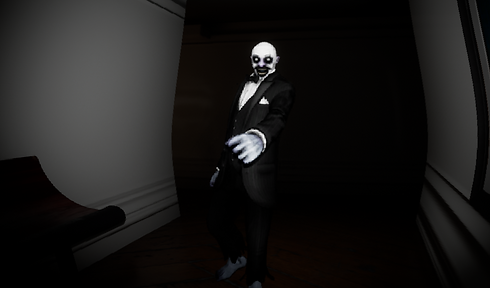Consciousness
"There is a striking atmosphere of unease as the dull tones of the ever-present monster approaches, keeping you on the edge of your seat" - Terry Greer
Tools: Unreal Engine 5, Canva, Git, Trello, Fork Team Size: 1 Duration: 4 Months
A 1st person horror game where you wander around a horrific nightmare, attempting to escape the clutches of a monster who roams the nightmare. Armed with only a flashlight to navigate, the only option to survive is to find 5 randomly placed totems to free yourself from the nightmare.
Responsibilities:
-
Drafted and sketched original-level design ideas, incorporating these plans and ideas into the main game.
-
Balanced gameplay around the player's and entity's navigation and accessible routes.
-
Pitched and prototyped core-level ideas via rapid prototyping using Unreal Engine 5.
-
Drafted and sketched original-level design ideas, incorporating these plans and ideas into the main game.
-
Created the original concept of the game, iterating on several ideas before landing on the main idea.
-
Created various game design documents, detailing what the game is as well as exploring the level design.
-
Balanced general gameplay, such as how the player and entity interact with each other.
-
Designed and implemented core gameplay mechanics such as the flashlight and the entity's behaviour.
-
Balanced mechanics to make them fair for the player.
.png)
Design Process
In the creation of Consciousness, I drew inspiration from multiple sources, exploring various horror themes. Once I settled on the horror genre, I designed the core gameplay loop, emphasizing the theme of powerlessness and survival. Consciousness was crafted as a horror game where combat was absent, and players had no means to confront the looming threat. Instead, the gameplay focused solely on evading the pursuing monster and finding a means of escape through the strategically placed totems.
This concept was inspired by games like Slender Man and Outlast, where the player's only option was to run and hide, heightening the sense of fear and vulnerability.

Rough draft of the main level

Rough draft of the main level

Rough draft of the main level
Design Process:
As the driving force behind the project, I assumed multiple pivotal roles, including lead designer, level designer, mechanics designer, audio designer, and music composer, in the creation of the unique horror game titled Consciousness.
I had always wanted to create a horror game but had previously struggled with where to start.
The layout and construction of every level became my focus, making many sketches both physically and digitally before landing on one large level where numerous walk-throughs could be carried out without feeling repetitive or boring. In crafting these levels, I aimed to strike a delicate balance between challenge and reward, motivated by my love for games that reward exploration, a passion I've held for years. In this, players had the option to explore multiple paths to tackle the situation, each route offering different forms of cover or elevation advantages.
Design Goals:
Immersive Nightmare Experience:
-
Goal: Create an immersive nightmare world that engulfs players in a chilling atmosphere, pushing the boundaries of horror game design. Utilize detailed level design, haunting visuals, and eerie soundscapes to evoke fear and tension, ensuring players are deeply immersed in the nightmare environment.
-
Objective: Design the roaming monster to move slower than the player character, creating a constant sense of dread as it inches closer. This deliberate pace allows players to maintain a slight advantage but reinforces the need for caution. The slower movement amplifies tension, making every encounter with the monster a nerve-wracking experience.
Dynamic Gameplay Mechanics:
-
Goal: Develop innovative gameplay mechanics to challenge players' survival skills. Emphasize limited visibility with a realistic flashlight mechanic, incorporating resource management elements sprinting. Encourage strategic thinking by allowing players to use audio cues for tracking the monster and implementing a limited sprinting mechanic for daring escapes.
-
Objective: Implement a sight-based chase system where the monster can pursue the player upon direct visual contact. Once the monster spots the player, it gives chase for several seconds, forcing players to think quickly and make strategic decisions. This mechanic intensifies the horror element, keeping players on high alert and encouraging them to break the line of sight to evade capture.

.png)
What I learnt:
-
How to implement randomisation for the location of spawning objects.
-
Create camera effects for the view screen of the player.
-
Created a dynamic AI that chases the player.
-
Sketch and design numerous levels before implementation.
-
Design and manage a GDD for a solo project.
-
Create location-based sound effects (Player hears monster moving around)
-
How to design a game on a genre I haven't explored or created yet (in terms of designing games)